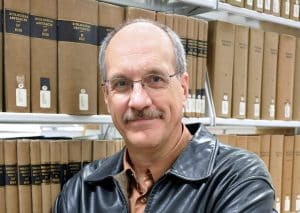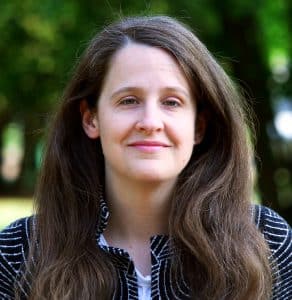Treatment varies for people with hoarding disorder

More practitioners needed in field
The problem of hoarding went relatively unnoticed as a behavioral issue until the first systematic study of the condition was published in 1993 in the journal “Behavior Research and Therapy.” Thirty years later some of the early conceptions around hoarding have been dispelled and/or modified.
Randy O. Frost, Ph.D, Harold and Elsa Siipola Israel professor emeritus of psychology, Smith College, reported that hoarding was originally interpreted as a subtype of obsessive-compulsive disorder (OCD), a concept not based on research. In the mid-1990s, he and his colleagues discovered the phenomenology of hoarding was quite different from OCD. “It did not manifest as intrusive thoughts that are interpreted catastrophically,” he said.
Frost noted that hoarding has a lot to do with identity development. He explained that the person forms an attachment associated with certain motives. “In a sense the possessions represent an opportunity for future identity,” Frost said. For instance, in one case a person accumulated 300 cookbooks but never cooked. She embraced a fantasy that she would be a good cook someday.
In other cases, the possessions may represent an idealized past, bring back memories, or evoke fear of being wasteful, according to Frost. He pointed out that those who hoard save items, regardless of worth.
Frost developed a treatment approach in which he asks the person to pick up an item, tell its story and then match that story with the context of the individual’s life. This process reflects the Proust phenomenon, which asserts that the senses trigger a visceral experience, and suggests the reaction may be responsible in some way for the tendency to acquire and hold on to possessions.
In general, Frost finds that people with hoarding behavior have elevated anxiety and sensitivity and low tolerance for stress.
Jessica L. Rasmussen, Ph.D, is an assistant in psychology (Psychiatry) at Massachusetts General Hospital.According to Jessica L. Rasmussen, Ph.D, assistant in psychology (Psychiatry) at Massachusetts General Hospital, people who hoard often have less insight into the problem, while those with OCD experience a lot of distress and may self-refer for treatment.
On the other hand, people with hoarding behavior enter treatment because a family member raises the issue or through a social system. Treatment sometimes does not begin until a decade or two after the problem begins as the person fails to recognize it as a problem, noted Rasmussen, who is also a psychology instructor at Harvard Medical School.
While standard cognitive behavioral therapy (CBT) is often used to treat OCD, the option is not efficacious in treating hoarding, which involves “…a restructuring component that challenges thoughts about discarding and acquiring.”
Through cognitive skills training the person is asked to “practice” non-acquisition as well as sorting, discarding, organizing, and categorizing possessions. Cognitive skills are aimed at helping the person practice sustaining attention and enable the patient to focus on decluttering.
“They have to develop an organization plan,” said Rasmussen, who also uses motivational interviewing in her practice. “The patient has to do a lot of work in between sessions. They have to practice sorting items every day, around 30 minutes a day.”
Standard OCD treatment may require 13 to 15 sessions, while hoarding therapy often takes 26 sessions or six months, according to Rasmussen.
 Rasmussen said neuropsychological difficulties are likely a contributing factor. “Those who hoard are more likely to have major depression, social anxiety, and generalized anxiety,” she said. She added that attention deficient disorder (ADD) may also be present. In some cases, medication, such as SSRIs or SSNRIs, can be effective.
Rasmussen said neuropsychological difficulties are likely a contributing factor. “Those who hoard are more likely to have major depression, social anxiety, and generalized anxiety,” she said. She added that attention deficient disorder (ADD) may also be present. In some cases, medication, such as SSRIs or SSNRIs, can be effective.
Jordana Muroff, Ph.D, LICSW, associate professor and chair, Clinical Practice Department, Boston University School of Social Work, clarified that acquisition is not a main diagnostic feature for hoarding, but rather is a “specifier.”
She said, “A clinician could determine that an individual meets the criteria for the key features for hoarding disorder and add the specifier ‘with excessive acquisition.’”
Difficulty letting go of items is one of the hallmarks of hoarding behavior, Muroff said. When devising a strategy to manage the process, it’s necessary to focus on the person, not just the stuff and consider different scenarios.
Why are the items being saved important to the person? Is the person at risk of eviction? Is there a public health concern? The answer to these questions will enable the person to create specific goals in terms of safety and what the person values. The goals will then help the provider understand how to help the person.
Muroff has found that working with community partners is critical when treating people who have hoarding behaviors. She explained that often, different entities work in silos, but a team approach is critical.
“It’s helpful to have a connection between entities through a hoarding task force. It brings together first responders, mental health providers, housing providers, code enforcement, the Council on Aging, safety officers, city employees, and others to coordinate responses related to hoarding,” she said. “It’s helpful to work and interact with different domains to generate solutions and learn from each other. We learn together and build connections, working across silos.”
Last summer, Muroff collaborated to develop and deliver a blended training for hoarding that included an online course through The Network for Professional Education at Boston University School of Social Work and in-person trainings.
This blended training was delivered to about 70 City of Boston employees who encounter hoarding in their jobs. The course focused on older adults and provided information about assessment, domains, interventions, and allowed for an opportunity to practice skills together, she said.
In addition, the course reviews ethical and legal issues that might arise when working with a person with hoarding behavior. The program is available online to social workers and other health and human services providers who work with adults with hoarding.
Muroff pointed out that the International OCD Foundation is another excellent resource for providers who want to learn more about the hoarding disorder and how to treat it.
According to Muroff, two to five percent of the population has clinical levels of hoarding. Currently, there is great demand for more practitioners in this field that are training to work with this mental health challenge, she noted.
